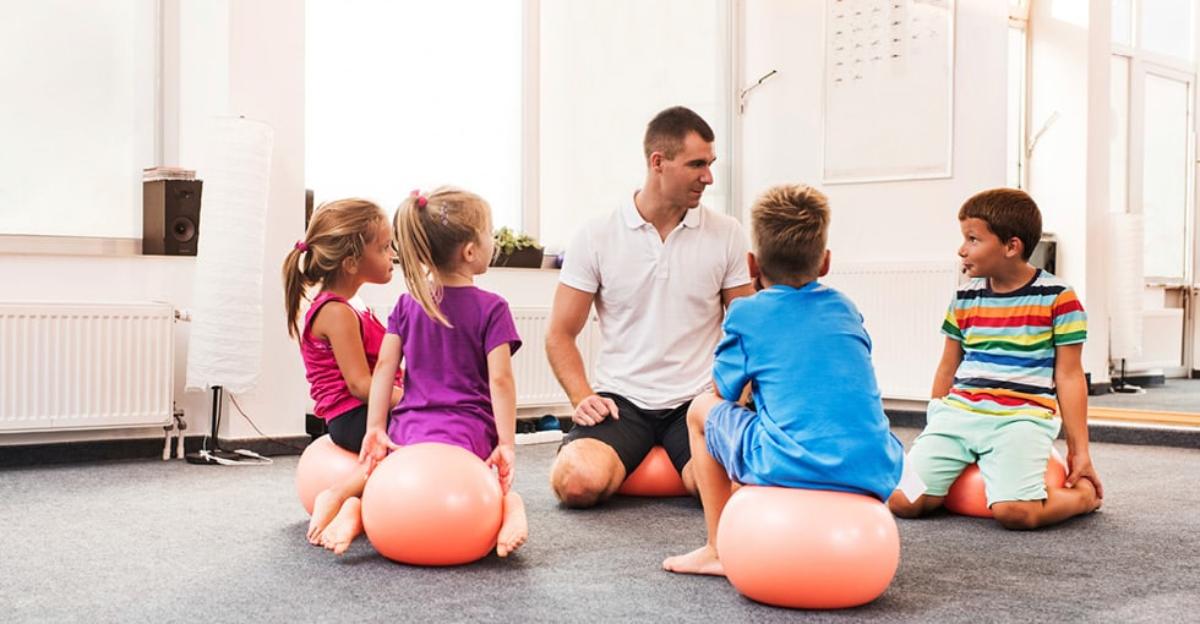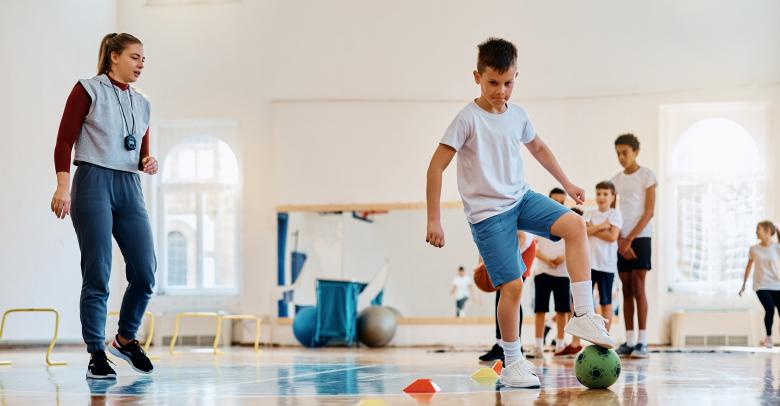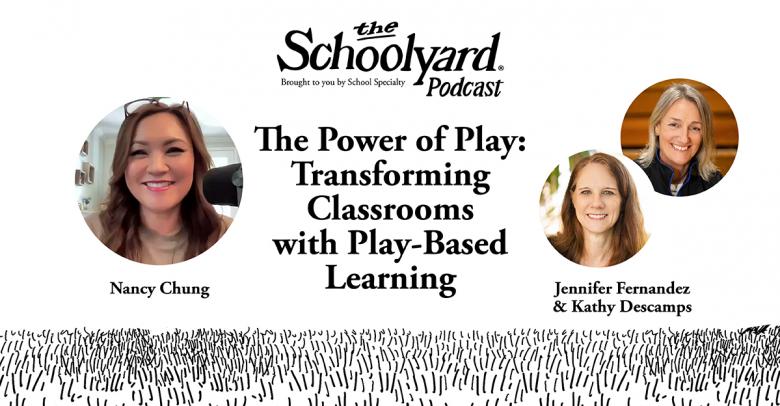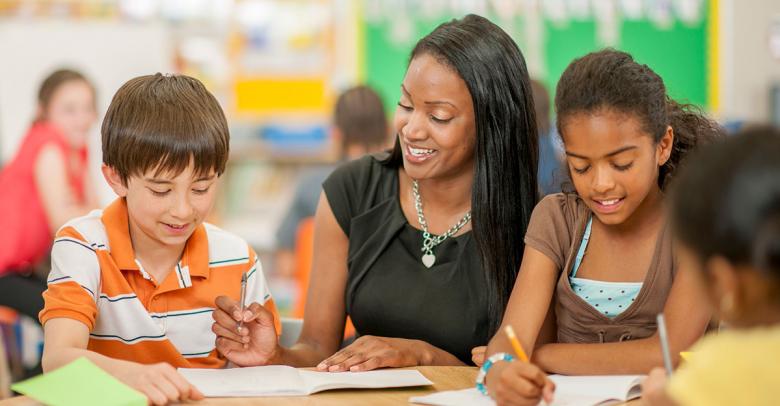You see them at the gym, in offices and classrooms, and in homes. They are those big, brightly colored, air-filled rubber balls. They are called therapy balls, exercise balls, yoga balls, balance balls, physioballs, Pilates balls, stability balls, and Swiss balls. Although they have all sorts of uses and benefits, let’s focus on the things you can do with these balls if you are a classroom teacher.
Use as a Chair
Throughout the day, allowing students to sit on a ball instead of their regular chair uses the core muscles of their abdominals and back. They must keep these muscles constantly engaged to hold proper posture and balance. Doing this in short increments throughout the day can help strengthen their core. Because a ball is an unstable surface, students will improve their balance while constantly adjusting their bodies on the ball.
Some children with sensory processing disorders, ADHD, or just need to move, benefit greatly from using the ball as a chair because it puts them in constant motion. Research has shown that for students with these issues, it helps them stay focused and improves behavior.
Finally, because students are more active due to the constant adjusting and moving, they are able to burn off excess energy.
Exercises
In addition to using them as chairs, there are many fun exercises students can do throughout the day to help with strength, balance, and posture. Every half hour or so, take a quick break and do any of the following (using music adds to the fun and motivation):
Individual Activities
• Basic Bounce: Students sitting on the ball with good posture. Make small bouncing motions up and down.
• Slow-Mo Marching: Students sitting on the ball. Slowly lift one knee at a time so foot comes off the floor. Alternate knees. Move as though doing a slow-motion march. Add arm movements as a challenge.
• Circle Roll: Students sitting on the ball. Use hips to roll the ball in a large circle. Reverse on signal.
• Opposite Lift: Students lying prone (on stomach) on the ball with hands and feet touching the floor. Slowly lift one hand and opposite foot off the floor and hold. Repeat with opposite sides.
• Prone Push-up: Students lying prone (on stomach) on the ball with hands touching the floor and feet off the floor. Bend and straighten elbows to complete a push-up.
• Prone Walkout: Students lying prone (on stomach) on the ball with hands touching the floor and feet off the floor. Walk hands forward until feet are on the ball and arms are in push-up position. Reverse direction so hands are back to starting position.
• Self-Passing: Students lying supine (on back) on the floor with the ball between their feet. Bring feet toward hands and pass the ball to hands. Bring the ball overhead to touch the ground while feet go back to touch the ground. Repeat and pass ball from hands to feet. Continue passing back and forth.
• Child’s Pose: Student on hands and knees with the ball in front of head. Place arms on top of ball and stretch forward while the ball rolls slowly forward. Lower head behind the ball and stretch upper back.
Partner Activities
• Twist and Turn: Students in pairs, each sitting on a ball, with their backs to each other and balls touching. Pass a beanbag (or anything) to partner by twisting to one direction, then receive it by twisting the other way. Continue passing the toy around as though orbiting the pair. On signal, switch directions.
• Mirror, Mirror: Students in pairs, each sitting on a ball, facing each other. One is the Leader, the other Follower. On signal Leader moves body parts slowly on the ball while Follower mirrors their moves. On signal, switch roles.
Group Activities
• Class-Passing: Have students lying end-to-end around the classroom floor. Where one student’s hands lie overhead, the next student’s feet begin, thus forming a human chain around the room. Give every 2-3 students a ball and tell them which direction the balls are to be passed. On signal, students pass the ball from their hands to the next student’s feet (or reverse), who then passes it to their own hands and on to the next student’s feet. Challenge them to keep the balls from hitting the ground and work together.
• Simon Says: While all students are seated on balls, play Simon Says. If a student does a move without Simon telling him/her to do it, they bounce on the ball 10X (or another task), then re-enter the game.
Not sure which ball to use in your classroom? Try our seam-free Sportime 29-1/2 inch Exercise and Play Ball or the Gymnic 33 inch Physio-Roll Ball or Gymnic Anti-Skid BallBowl for more stability. Also check out these ball chairs with built-in legs.






Leave a Reply